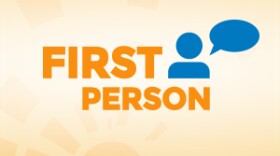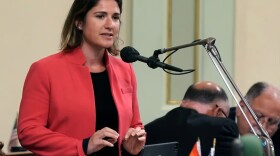It's time for another installment of our first person series stories of San Diego and told in their own words. This month the first Latina to go to space will be inducted into the U.S. astronaut Hall of Fame. Ellen's passion for science is based started as a young girl and she attended high school and graduated with a degree in physics from San Diego State University. I up in the 60s and 70s and that was an exciting time for the country for space. Everybody was watching the Apollo program. So I would say everybody was interested in space to a certain extent but at that time there were no women astronauts and they were not allowed to apply and you saw very few women working at NASA so it wasn't something that at that time I ever thought about growing up in doing. When I went to graduate school at Stanford University, it was the same year that the space shuttle flew for the first time and that was a very different kind of spacecraft that have ever flown before. Was going to carry a number of crewmembers and for the first time astronauts have been selected her were women and minorities and it was all those things put together that got me very interested in applying to the astronaut program. Going into space is very exciting. The launch is very dynamic. A lot of changes in acceleration and you get to a maximum of about three cheese -- 3 Gs and then you go to zero gravity. And then we had a great opportunity to view the Earth from space and because of our mission we were traveling in orbit that was inclined 56 degrees to the equator. We were traveling over the entire populated portion of the earth and could see every continent except Antarctica also being able to view the earth while we were collecting data on the atmosphere was a really exciting experience. I've been fortunate enough to be on four space shuttle missions and two were studying the Earth's atmosphere primarily the problem of the ozone hole and ozone depletion and then the second two were part of assembling the international space station program. One I was on the first shuttle mission to talk with the space station. This is before any people were on board. It was just two modules at that time and about 40 feet long and we transferred supplies to the inside and outside of the station and then I got to come back three years later and we had a mission to add the very first piece of structure to the international space station. There was a crew living on board at that time and when we arrived that made a total of 10 people working together on board to start that particular part of the assembly process. That structure is now 350 feet long and it is where the four large raise hang off of. When I applied to the astronaut corps and selected I do not think that much about my Hispanic background or what that might mean. After I became the first Hispanic woman in space I got all kinds of invitations to come speak at schools with high Hispanic populations and other groups that were encouraging Hispanics and young women to study science and engineering. So I've had the opportunity to give hundreds of talks and interact with students all over the country and even around the world and that's been a part of the job that even though I do not ink about it's really been very rewarding. My mother was a person who had the biggest influence on me. She encourage all of my siblings as well as myself to go pursue whatever we wanted to do but she was always very interested in education and interested in learning. She loved learning new things and she passed on to all of us. Just appreciate the education that I was able to get when I was growing up in San Diego and really education is the key what allowed me to be selected so I had a great start in San Diego. She logged almost a dozen hours in space and now serves as a director of NASA's Johnson space center in Houston and she's a trained float is and played her flute in space during her first space mission. This first-person feature was produced by Marissa Cabrera.
When Ellen Ochoa was growing up in La Mesa in the 60’s, a career in space exploration did not cross her mind.
“At that time there weren’t women astronauts, they weren’t allowed to apply. And actually you saw very few women at all working at NASA. So, it’s something that at that time I never thought about growing up and doing,” she said.
It was not until she was in graduate school that her interest in joining NASA’s astronaut program grew.
In 1993, Ochoa became the first Latina to travel to space. She was part of a 90-day space mission to study the Earth’s atmosphere aboard the space shuttle Discovery. As an astronaut, Ochoa has flown on four space missions, logging almost 1,000 hours in orbit.
This month, Ochoa will be inducted into the U.S. Astronaut Hall of Fame.
As part of our First Person series, Ochoa, who now serves as the first woman director of NASA’s Johnson Space Center and is a classical flautist, talks about her passion for space exploration.






